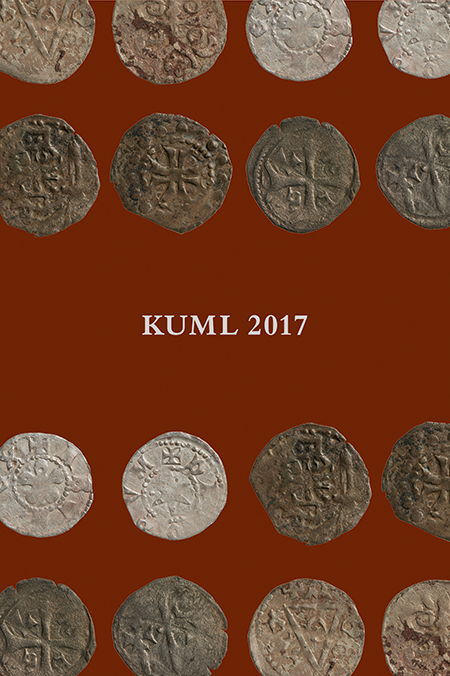Mønttyper og møntsteder, datering og distribution – Potentiale og problemstillinger ved studiet af danske mønter fra midten af 1200-tallet
DOI:
https://doi.org/10.7146/kuml.v66i66.98805Nøgleord:
mønttyper, møntsteder, datering, distributionResumé
Coin types and mints, dating and distribution
Problems and potential in studies of Danish coins
from the mid-13th century
So-called civil-war coins constitute the largest group of coins found archaeologically in Denmark. They have always been common, but today’s widespread use of metal detectors, combined with the current treasure trove administration, means that civil-war coins now comprise almost 80% of the total coin record (Horsnæs 2017). These many new finds give cause for reassessment, not only of the coins themselves, but also of the methods and traditional interpretations that have been employed and applied for more than a century.
In common parlance, the term civil-war coins refers to all coins minted in Denmark between 1241 and the second half of the 14th century. The name is problematic, but it is so widely used by metal detectorists, historians and archaeologists that it should probably be retained as the conventional term.
Civil-war coins usually appear in finds reports and lists with a brief description comprising their number according to Mansfell-Bûllner’s illustrations, together with their place of minting and date, which either follow Peter Hauberg’s attributions (1884) or Keld Grinder-Hansen’s adjustments to these (2000).
It is, however, important to be clear that, with respect to both geographical and chronological attributions of civil-war coins, these are not absolute truths but interpretations based on a combination of written sources, archaeological finds and theoretical assumptions. The growing number of finds has major consequences: It challenges traditional interpretations and gives cause for re-assessment of both the written sources and the theoretical foundation for the interpretation of the material. This does not just include our attribution of date and place of production, but also our understanding of the use of these coins in time, space and functional context.
In this article, we exemplify some of the pertinent questions and problems and, at the same time, also demonstrate the potential of a study of medieval coinage based on the growing body of finds. As an example, we have chosen the only group of coins that can be very precisely dated within the period, namely the type bearing the inscription ABEL REX, which means unequivocally that they were produced in the period 1250-52. This gives the opportunity to put the question of date to one side and to look instead at distribution, period of use and function.
Helle Horsnæs & Michael Märcher
Den kgl. Mønt-og Medaillesamling
Nationalmuseet
Downloads
Publiceret
Citation/Eksport
Nummer
Sektion
Licens
Fra og med årgang 2022 er artikler udgivet i Kuml med en licens fra Creative Commons (CC BY-NC-SA 4.0).
Alle tidligere årgange af tidsskriftet er ikke udgivet med en licens fra Creative Commons.


